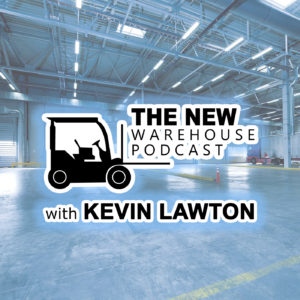
380: Scale Microgrids
380: Scale Microgrids

Welcome to The New Warehouse podcast! Tim Victor is the Project Lead for Electric Vehicles at Scale Microgrid, a company dedicated to accelerating the adoption of distributed energy resources to create a cleaner, more resilient, and more affordable future.
In this episode, Tim shares insights into the intersection of microgrids and electric vehicles in modern warehouses. Listeners can expect to gain a deeper understanding of the benefits of microgrids and electric vehicles for warehouses. Additionally, Tim discusses how these technologies can help warehouses achieve energy efficiency, resiliency, and sustainability goals. If you’re interested in learning more about the future of energy and its relationship to modern warehousing, be sure to listen to this episode.
What is a Microgrid?
A microgrid can help ensure a reliable and consistent energy supply and provide added energy security for warehouses and other businesses. Tim describes a microgrid as “a self-sustained energy system that operates independently of the larger power grid.” It is essentially a smaller version of the traditional grid, with its own energy-generating assets and the ability to control voltage and frequency.
Unlike traditional grids, a microgrid can disconnect from the larger grid in the event of an outage or other disruption. Microgrids incorporate a variety of assets, such as rotating assets, solar panels, and battery storage systems, to function efficiently. They can operate in parallel with the utility, allowing optimal energy use or function independently by generating their own energy.
Taking the Risk Out of Microgrid Adoption
Scale Microgrid owns and operates its own projects and offers zero upfront cost. This allows them to show up to a site, build, design, implement, commission, operate, and maintain a project. Customers can spread costs over a longer term, making it easier for businesses without a large bank account to access these services.
Scale Microgrid invests in high-quality and long-lasting technologies, which reduces the technology risk for their customers. This allows businesses unfamiliar with the technology to benefit without taking on the risk. Additionally, Scale can choose how to pursue sustainability and economics, providing the outcome their clients want without them having to understand how it works.
The Benefits, Challenges, and Solutions of Electrifying Fleets in Warehouses
As climate change continues to be a pressing issue on the global agenda, companies are looking to implement greener business practices to reduce their carbon footprint. One such practice is the electrification of fleets. Regulations on emissions are becoming increasingly stringent, and early electrification adoption may benefit companies.
Benefits of Electrification
Electrification of fleets can have many benefits for both the environment and the companies themselves. By reducing emissions, companies can positively impact the environment and contribute to the fight against climate change. Additionally, electric vehicles can have lower operating costs than traditional fossil fuel vehicles, reducing long-term expenses for companies.
Infrastructure and Power Costs
Infrastructure and power costs are concerns for companies looking to electrify their fleets. Companies must consider infrastructure needs and the associated power costs to properly prepare for this transition. Warehousing facilities are investing in their charging infrastructure. Still, there needs to be a system for fleets owned by third parties. Microgrids and distributed energy can help create more fuel predictability, reducing the risk of varying monthly costs.
Challenges and Solutions
Currently, the range benchmark for electric class eight vehicles is 300 miles, and companies must closely match their trips to those ranges. Outside depot charging is being considered an option, but complicated details such as cost and risk need to be discussed. Fleet electrification needs include OEMs, charging station providers, and consultants who can guide during the transition process.
Regulations and incentives make the transition to electric delivery fleets attractive. Tim adds, “Clean truck rules where they’re essentially saying at some point in the next 10 to 15 years, it’s going to be a requirement.”
The proposed rule changes by the Securities and Exchange Commission (SEC) would require organizations to disclose information about their climate-related risks and risk management processes, GHG emissions, and their impact on the company’s financial statements. This would make it easier for investors to assess a company’s exposure to transition risks and identify opportunities to improve climate risk management. The disclosure requirements would also help companies prepare to transition to a low-carbon economy and make informed decisions about their operations.
Opportunities for Shared Electricity Use
Utilizing microgrids in logistics parks could offer potential benefits in shared electricity use. By sharing electricity between companies, there are opportunities for cost savings and greater sustainability, as the amount of energy used can be optimized.
In conclusion, the electrification of fleets is a crucial step towards sustainable practices and reducing one’s carbon footprint. While challenges remain, companies have an opportunity to make a positive impact on the environment and potentially reduce long-term operating costs. Companies can ensure a smooth transition towards a greener future by considering factors such as infrastructure, power costs, and charging networks.
Key Takeaways
- Utilizing microgrids in logistics parks could offer potential benefits in shared electricity use.
- Electrification of fleets is becoming increasingly prevalent to meet regulatory standards, and early adoption can be beneficial.
- Microgrids and distributed energy can help create more fuel predictability since producing power at the exact cost every time reduces the risk of varying costs each month.
Listen to the episode below and leave your thoughts in the comments.
Guest Information
For more information on Scale Microgrids, click here.
To connect with Tim on LinkedIn, click here.
For more information about warehouse sustainability, check out the podcasts below.
The Smart Warehouse with Softeon





387: Demystifying Sustainability With Gravity » The New Warehouse
[…] 380: Scale Microgrids […]
Asset Management in Warehousing with Traka Americas
[…] 380: Scale Microgrids […]